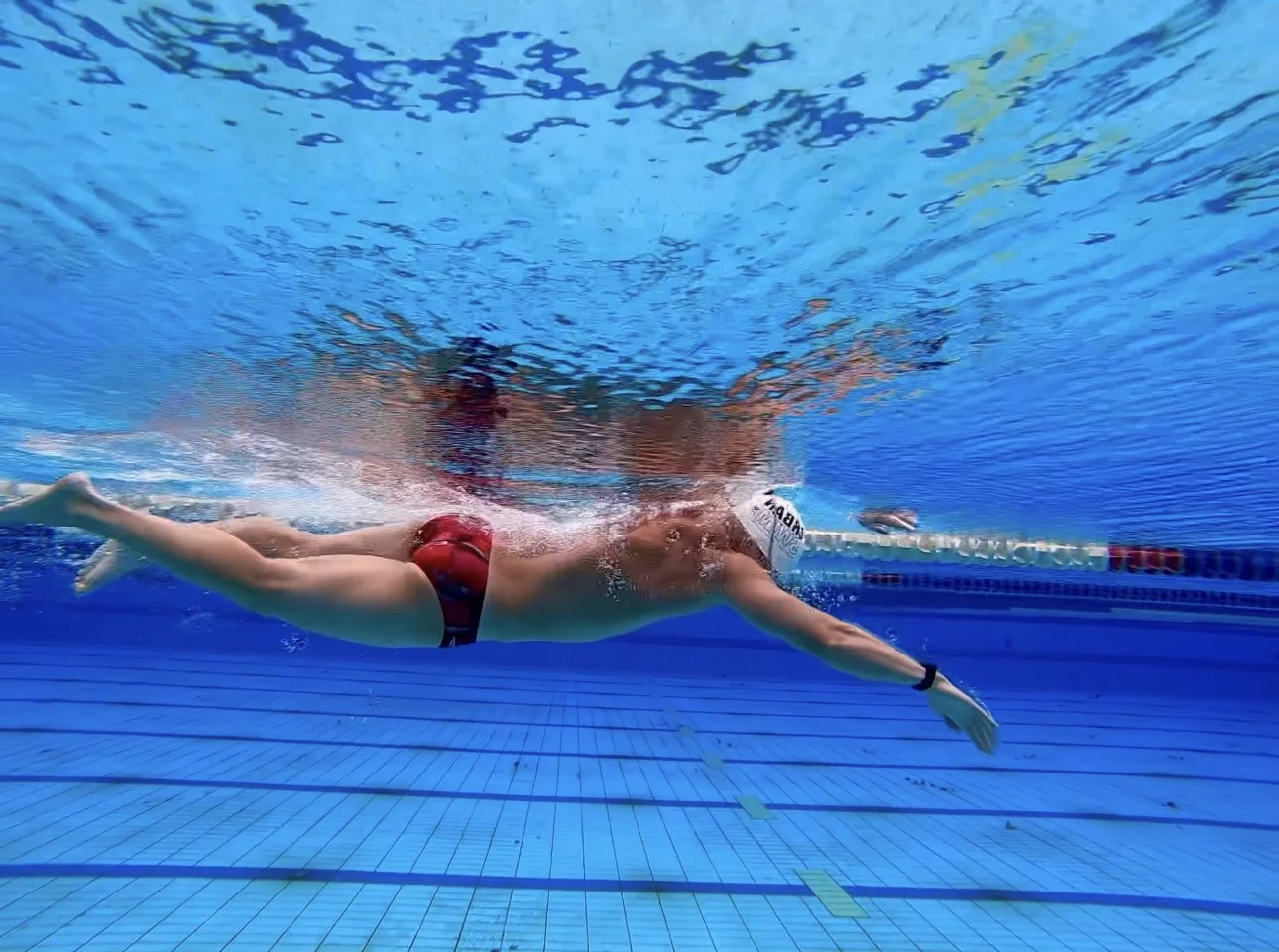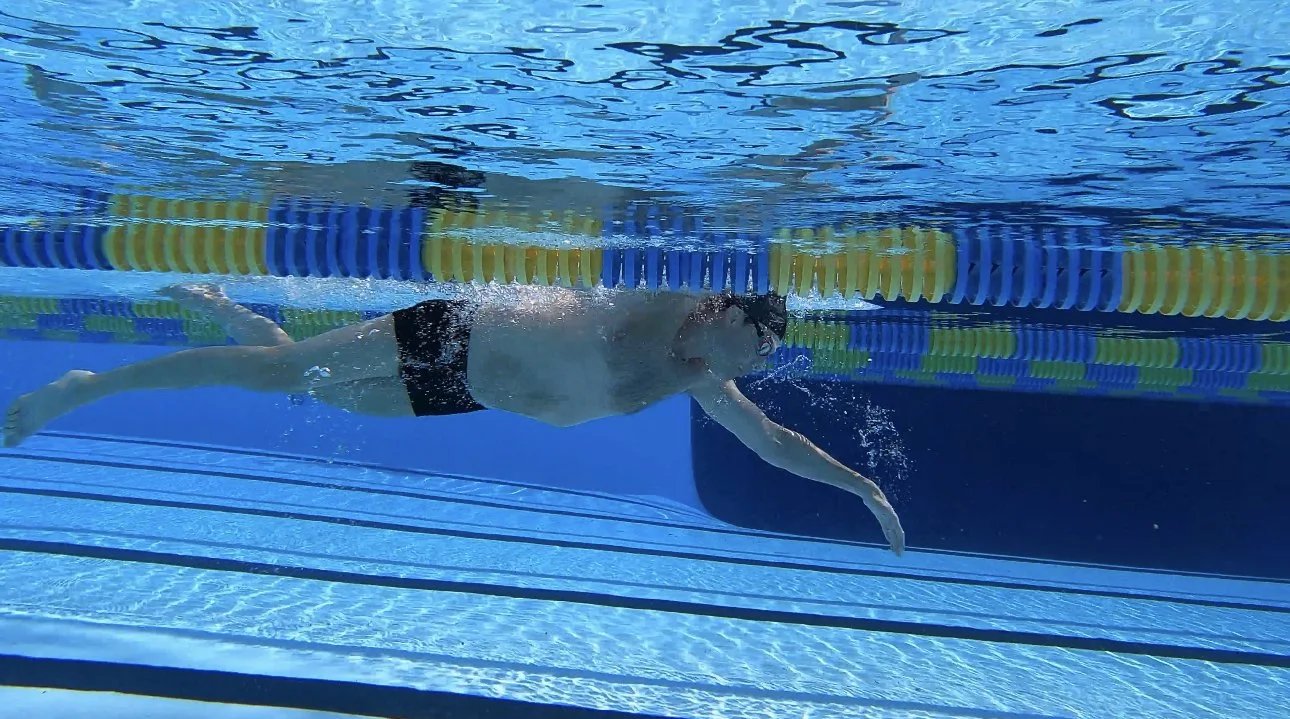Bent Vs Straight-arm Freestyle Catch
/Last week, triathlete, Markus Marthaler and I got together to discuss the most elusive technique style in all of swimming, the high elbow catch. Also referred to as the bent elbow catch, or early vertical forearm (EVF), the position is championed by the best freestyle swimmers as being the most efficient, sustainable, and propulsive technique. But is it the only way to swim? Tune into our thorough Youtube analysis below, where we dissect the topic, discussing the pros and cons, and how to find your best technique based on your experience, distance, and ability.
What is the High Elbow Catch (EVF)?
The high elbow catch, demonstrated impeccably by Markus, below, is simply the underwater phase of the freestyle stroke with the hand in a position below the elbow. After the entry and extension phases of the stroke, swimmers should begin bending their elbow, creating pressure against their hand and forearm, below the elbow, setting up a strong propulsive pull, with the greatest surface area possible.
This position effectively turns the entire lower arm into a paddle, shortening the lever arm, or length of the pulling arm, allowing the strong propulsive lat muscles to pull harder across the decreased length, and faster via a shorter path. It’s a technique and position favored by the worlds best freestylers, particularly those swimming distances over 100m, like middle distance pool competitors, triathlete, and open water swimmers, due to its sustainability.
Getting into this position early, requires a tremendous amount of shoulder mobility, both from the shoulder blade upwardly rotating towards your ears, and the shoulder joint internally rotating. For many adult-onset swimmers, who did not develop this mobility and technique in their youth, the shoulder and brain may be stubbornly rigid in achieving this position. Furthermore, it requires excellent rotation from the hips, rocking the body from hip to hip, shoulder to shoulder.
The Spectrum of Freestyle Techniques
The good news is, the ideal technique for you, exists on a spectrum, and with time and practice you can develop the best position for your stroke. Let’s take a look.
straight arm vs bent arm freestyle
High Elbow vs. Straight Arm
The straight-arm catch is popular among sprinters. It takes advantage of a longer lever arm, or arm length, requiring maximum torque or force from the lats around the shoulder, through a longer stroke path. The pay off is increased force and speed, at the expense of sustainability.
While this technique also places the hand below the shoulder, the long arm position requires tremendous strength. Straight-arm freestyle swimmers, maintain pressure on their hand and long arm, throughout the path of the stroke, creating tremendous force and speed for short lived efforts, such as the 50 and 100 meter sprinting events. This position requires less shoulder internal rotation, but more thoracic or upper spine rotation, coupled with a flatter hip position, and a strong kick.
high elbow catch vs straight arm
Dropping the Elbow
A common technique flaw in freestyle is dropping the elbow. Swimmers initiate the pull from the shoulder, drawing the elbow back first, instead of bending at the elbow and pulling with the hand and forearm. The small surface area of the elbow catches significantly less water. Many swimmers with this flaw eventually get vertical with their forearm, but not until later in the stroke, wasting a lot of front end propulsion. These swimmers would benefit from some of the catch drills below that encourage bending at the elbow first, keeping the elbow above the hand, and maintaining pressure on their forearm, as they drive their lower arm backwards, like a paddle.
In our video analysis above, Markus and I discuss and compare the dryland joint action examples of the pull-up versus a muscle-up, or press-up out of the pool. While the pull up is arguable the most important dryland strength exercise for swimmers, the elbows back first strategy is not what we want to pattern in the water.
However, it’s important to make the distinction between the best exercises for developing strength in muscles that have carryover to swimming, and patterns used to improve technique in the water. Again the pull up is THE best exercise for developing strength and power in the lats, the muscles used primarily in swim pulling, but additional technique pattering drills are needed to teach the join actions and sequencing of the the freestyle pull, where the demands and forces are a bit different.
Training for the Best Arm Stroke in Swimming
In our discussion, Markus using vivid external imagery and movement examples to explain the high elbow catch. He likens the high elbow pull to that of a muscle-up, or press-up out of the pool, which involves pressing the hands into gym rings, or the pool deck, pulling them below the elbow, as the body is pressed up against gravity, in these examples, or forward in the water, swimming horizontally.
Bent Arm vs Straight Arm. Freestyle swimming
In the water swimmers looking to improve their catch would benefit from 5-10 min of catch drills, like some of the examples below, in the beginning of the session, to set their catch and improve their feel for the water. If you sense your pull is not translating into the forward movement you desire, give some of these drills a shot. Be patient, and know that the best technique is the one suited to your experience and goals. The best swimmers employ a variety of styles, rooted in a few principles, but all finding the best style for their bodies and events.
Interested in analyzing your technique and finding a swim and dryland drill prescription specific to your needs? Check out some coaching and programming options, here!





